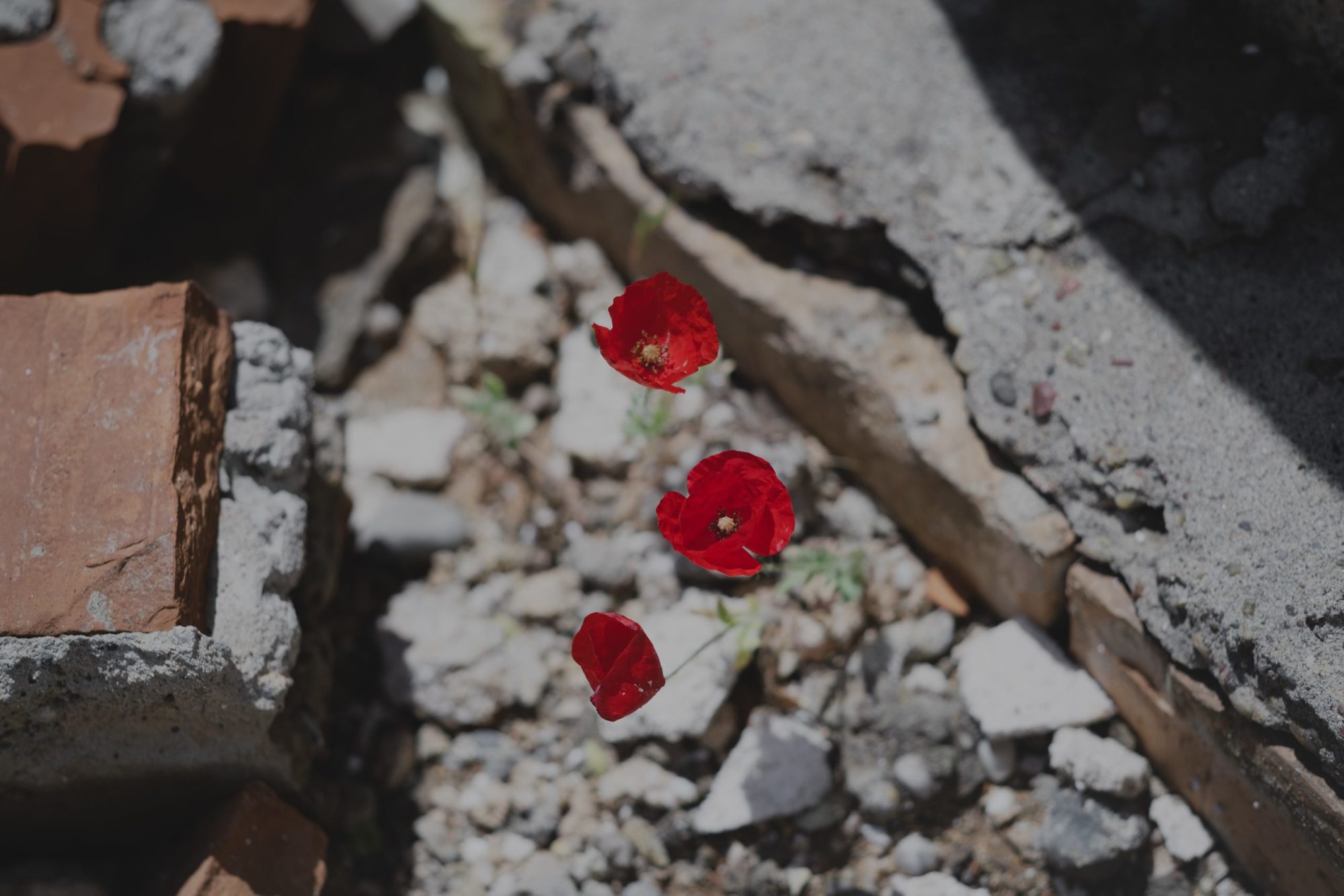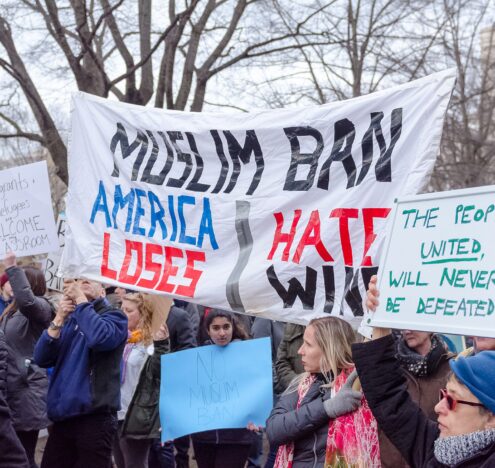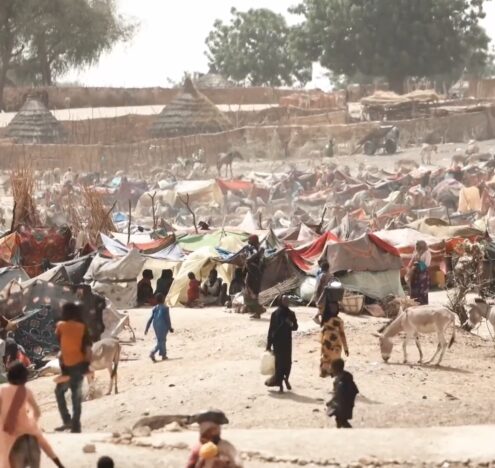“Adults in a Room” is a series in collaboration with The Atlantic Council’s New American Engagement Initiative (NAEI). The series stems from NAEI’s monthly networking events that call on analysts to gather virtually and hash out a salient topic. The goal of this series is to give you a peek into their Zoom room and a deep understanding of the issue at hand in less than the time it takes to sip your morning coffee, without the jargon, acronyms, and stuffiness that often come with expertise.
What are the experts talking about this September? The withdrawal of US forces from Afghanistan marked the end of the largest ongoing component of the Global War on Terror (GWOT), launched in the aftermath of the 9/11 attacks. What does the GWOT look like 20 years on? Does the increased focus on US competition with China mean an end of the GWOT era, or will the systems put in place over the past two decades persist?
Does the increased focus on US competition with China mean an end of the GWOT era, or will the systems put in place over the past two decades persist?
The Atlantic Council’s New American Engagement Initiative (NAEI) brought together a number of experts to discuss the key lessons from the ongoing GWOT. The discussion was wide-ranging, covering the initial decision to respond to the 9/11 attacks with the invasion of Afghanistan, the challenges of the non-military components on the missions of both the war in Afghanistan and the one on terror like development, and the massive expansion of the US security state oriented around preventing a narrow band of possible threats. There was general consensus that the GWOT model was no longer useful for achieving US foreign policy goals and agreement that resources needed to be reallocated to better fit the demands of the day. There was less agreement on the question of how the United States could best utilize its non-military tools to help countries mitigate terror threats on their own. Four of the participants expanded on their thoughts about the most important lessons to be drawn from the GWOT below:
Aude Darnal, Associate Director, NAEI
Going to war to counter extremism is often akin to patching a leak in a roof instead of looking for the source of the leak.
While many are asking what could have been done differently in Afghanistan to win the war, the more challenging question is whether the US government could have taken non-military action to counter the threat of violent extremism after 9/11. To be sure, force may be the most straightforward way to momentarily degrade terrorists’ capabilities to attack or seize territories. It is, however, unlikely to address the root causes enabling violent extremist groups to recruit and thrive. This conundrum is not specific to Afghanistan, and should lead every policy discussion on countering violent extremism, regardless of the country or region, or the particular violent extremist group being targeted. After years of disastrous military operations in the Middle East and in Africa, it has become clear that targeted killings and military tools do not effectively counter violent extremist groups, though they may — often only temporarily — impact their capacity to attack. These groups are typically networks, deeply ingrained in the areas in which they operate, and foreign military interventions to root them out have proven to largely fail, even as they exacerbate grievances that can actually be used by violent extremist groups as a justification for violence.
Going to war to counter extremism is often akin to patching a leak in a roof instead of looking for the source of the leak. Local expertise is invaluable, but even there it can be challenging to leverage it into a coherent strategy. In short, policymakers need to understand and consider the underlying dynamics that animate these groups and their support base, and ask whether the United States’ own military campaigns are part of the problem, rather than the solution.
Madison Schramm, Assistant Professor, US Army War College
The study and practice of war is often siloed temporally (onset, conduct, and termination), thematically (e.g. coalition- building, ops planning, technology, institutions, negotiations), and institutionally (e.g. White House, USAID, Defense, State, universities, and think tanks), making for a complex coordination challenge. To develop coherent and attainable objectives, we need wide-ranging exchanges among diverse actors and groups to uncover overlapping and contradicting actions and policies, and to adapt to new dynamics.
While the prospects of “winning” in Afghanistan (and what would have constituted victory) can be debated, there is little doubt that the United States could have done better. The dearth of cross-institutional, political, and intellectual discussions regarding both ends and means at all stages of the conflict seems to have been just as important to the outcome as the realities of physical and human geography on the ground.
This kind of coordination is no small feat. There are bureaucratic and logistical challenges, not to mention the cognitive barriers to keeping track of all these moving parts. Perfection is unattainable even for a country as rich and powerful as the United States, and we have plenty of examples of similar failures at home and abroad. It is not unreasonable, though, to ask that we do better. And if we can’t, that is all the more reason to rethink the utility of military intervention and the long-term feasibility of foreign-imposed regime change.
(The views expressed are those of the author and do not necessarily reflect the official policy or position of the Department of the Army, Department of Defense, or the US Government.)
Harlan Ullman, Senior Advisor, Atlantic Council’s Scowcroft Center for Strategy and Security
The most important lesson that should have been learned after the 9/11 attacks and was not is this: 9/11 ended the dominance of the Westphalian state-centric system in international politics. The Westphalian system was based on both the sovereignty and ultimate authority of states as the arbiters of using force decisively to affect matters of war and peace. Of course, individuals always had a limited capacity to do that — Gavrilo Princip with a handful of bullets precipitated World War I murdering an archduke and his wife in June 1914.
The most important lesson that should have been learned after the 9/11 attacks and was not is this: 9/11 ended the dominance of the Westphalian state-centric system in international politics.
But Al Qaida demonstrated that non-state actors had acquired this capacity, in part playing on the vulnerabilities of states, ironically derived from globalization and the diffusion of power that greatly raised standards of living. In this process, greater vulnerabilities to disruption were created. As we have become more reliant on technology and more interconnected due to globalization, we have also become more vulnerable, ushering in an era symbolized by what I call the Fifth Horseman of the Apocalypse armed with a new MAD for Massive Attacks of Disruption ranging from failed and failing government to climate change to cyber and social media, all exacerbated by COVID-19, which has claimed more American lives than WWI, WWII, and the Vietnam war combined.
Unfortunately, the presence of MAD as at least as threatening as possible state adversaries — and probably more so — has not been realized. Hence, the United States among others is facing the twenty-first century with concepts still wedded in past centuries dealing with the principal dangers emanating from states when MAD has become the new threat.
Micah Zenko, Director of Research and Learning, McChrystal Group
The 9/11 terrorist attacks were catastrophic and nation-altering, as well as an anomaly in the history of international terrorism. It is a poor idea for a great power to design and implement its grand strategy on extremely rare and recent events. However, if that great power chooses to do so, it should carefully and accurately diagnose the event — from the underlying causes and conditions to the best corresponding preventative measures.
Fortunately, the United States produced such a diagnosis in the form of the bipartisan 9/11 Commission Report. The Commission’s findings and recommendations could have served as both the x-ray and roadmap for structuring the foreign policy component of America’s post-9/11 grand strategy. Unfortunately, this diagnosis was quickly discarded by civilian and military leaders, and the GWOT was subsequently pursued based upon a misremembered and historically inaccurate portrayal of 9/11.
This alternative, misleading diagnosis was centered on the “Safe Haven Thesis”: The proposition that an Afghanistan “safe haven” was essential for the planning and conducting of the 9/11 attacks. This was not determined by the Commission, which more strongly highlighted the safe havens in Germany, Florida, Arizona, California, Minnesota, Maryland, and elsewhere. Nevertheless, this thesis became the accepted truth for politicians, pundits, and government officials. It’s long past time for the United States to reevaluate the GWOT and the needless harm it has done to the international system.





















